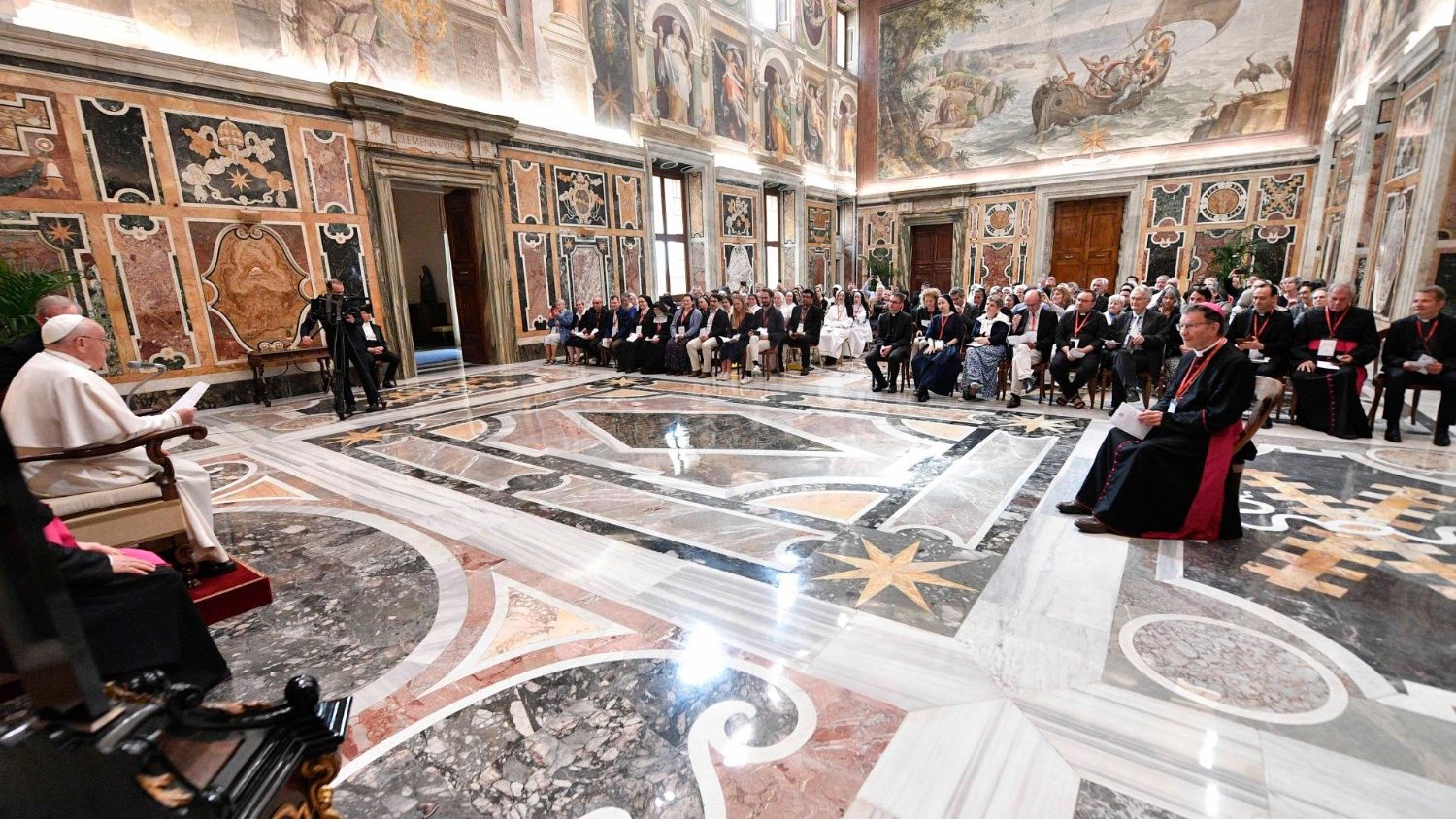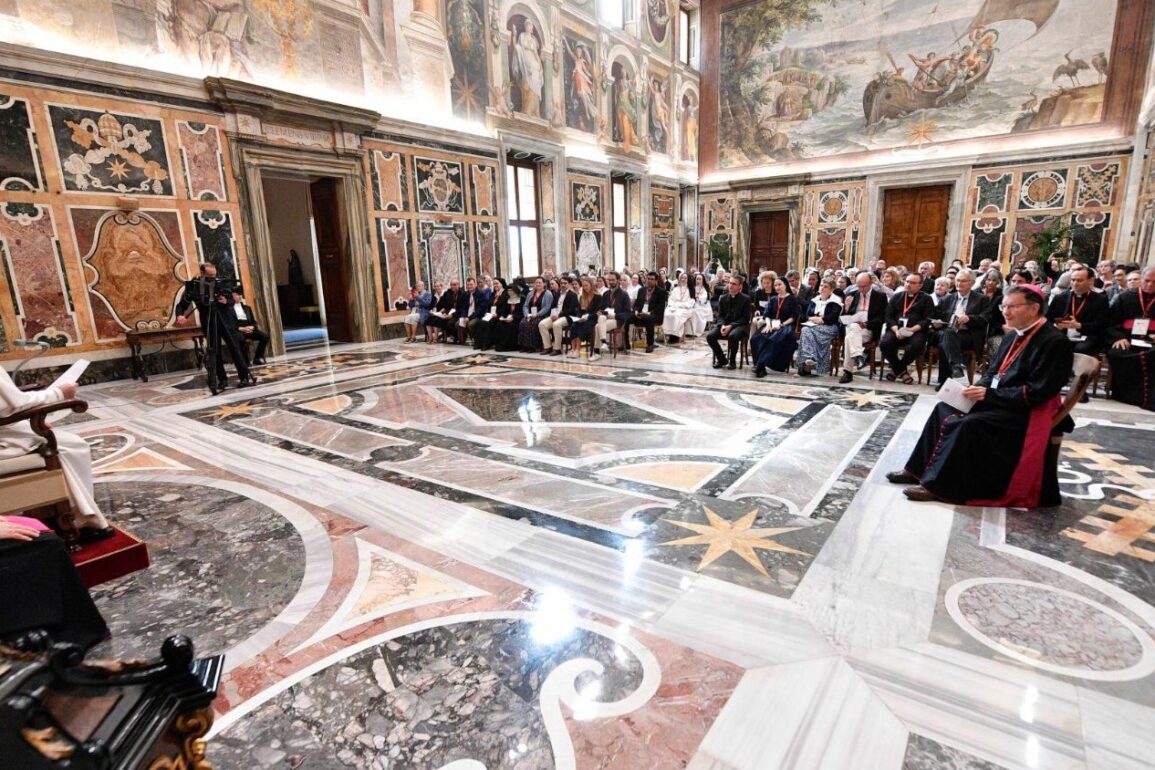
Meeting with participants in a conference organized in Rome on the occasion of the Jubilee celebrations of the apparitions and subsequent devotion to the Sacred Heart of Jesus, Pope Francis calls for a rediscovery of this Christian practice of reparation.
By Lisa Zengarini
The meaning of reparation in the Church is the focus of an international conference organized in Rome to mark the 350th anniversary of the Apparitions of the Heart of Jesus to St. Margaret Mary of Alacoque in Paray-le-Monial, in the French Bourgogne region.
St. Margaret Mary is known for introducing this devotion in the late 17th century which was later formally recognized and approved by Pope Clement XIII.
Repairing the wounds of abuse in the Church
Gathered in Rome from 1-5 May around the theme “Repairing the irreparable” the some 150 participants are discussing the relevance of the practice of reparation to the Sacred Heart of Jesus, especially in the present context of the Catholic Church marked by the abuse scandals that have shaken the faith of many faithful and created a deep need for reparation.
Pope Francis welcomed the conference as he met with the participants on Saturday.
In his speech he recalled that the concept of reparation is often found in the Scriptures, but in the New Testament it takes the form of a spiritual process within the framework of the Redemption brought about by Christ and His sacrifice on the Cross.
Reparation in the New Testament
“The novelty here – he said – is that it reveals the mercy of the Lord towards the sinner. Reparation therefore contributes to the reconciliation of men among themselves, but also to reconciliation with God, because the evil committed against one’s neighbour is also an offense against God.”
Pope Francis went on to note that the title of the conference encourages us to hope that every wound can be healed, even if it is deep: “Complete reparation sometimes seems impossible, when possessions or loved ones are permanently lost or when certain situations have become irreversible. But the intention to make amends and to do so concretely is essential for the reconciliation process and the return of peace to the heart.”
Any reparation begins with the recognition of one’s sin
For reparation to be truly Chistian and “not just a simple act of commutative justice”, he remarked, it must presuppose “two demanding attitudes: recognizing oneself guilty and asking for forgiveness.” Indeed, “any reparation, human or spiritual, begins with the recognition of one’s sin.”
Asking for forgiveness
Asking for forgiveness, on the other hand, “reopens the dialogue and manifests the desire to re-establish the bond in fraternal charity”, while reparation, or the even the simple desire to make reparation, guarantees the authenticity of the request for forgiveness. In this way, if the irreparable cannot be completely repaired, love can always be reborn, making the wound bearable.”
Concluding, Pope Francis expressed his wish that the conference “may renew and deepen the meaning of of the practice of reparation to the Sacred Heart of Jesus, introduced by Saint Margaret Mary and which today is somewhat forgotten or wrongly considered obsolete.


